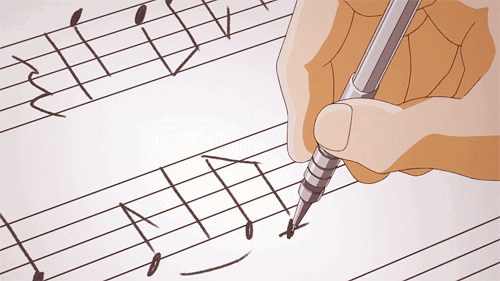
Week 4
All about that Bass(line)
LESSON 1
In this lesson, you will be completing your Composition Task 2.
Create an EverNote post of your progress, either in written or ‘video-selfie’ format. In this progress post, outline:
-
What you had at the start of the lesson.
-
What you had planned for your composition (in developing your rhythmic cells to have cross rhythms, repetition, and moto perpetuo)
-
The end result of your composition
-
Any observation about the compositional process or musical features along the way
Peer Feedback Guidelines:
You might be asked by a friend to have a listen to their composition, and to give some feedback! Remember to give kind, specific, and helpful feedback, using the language of the concepts.
Here are some sentence starters/templates for feedback:
-
I really like (section) because of the way that you use (feature) to create (effect caused by feature).
-
Have you thought about using (feature) in (instrumental layer) to make it more (effect caused by feature)?


Homework: Weekly Sight Singing
Download the Sight Singing Task.
This week's Sight Singing is slightly different. Choose one part (Soprano, Alto, Tenor, Bass) to sing.
Record an audio or video of your sight singing, and submit it to the Google Classroom submission box.
(Sight singing adapted from Bach Crucifixus from Mass in B Minor)
LESSON 2
Melodic Dictation
Download and print out the manuscript for melodic dictation (or open it on an app where you can edit it).
Dictate the Right Hand piano part of the theme of Beethoven's 32 Variations in C minor. Play it 5 times, with pauses between each playing.
Harmonic Progression on Descending Bassline
The harmonies in this piece is built on a chromatic descending bassline.
Let's analyse the harmonic progression of the Theme from Beethoven's 32 Variations in C minor.
How to figure out the chords:
-
Identify the key of the section.
-
Identify whether the chord is in root position or an inversion.
-
Look at the notes used in the chord. Identify the root of the chord.
-
If you're using letter names, name the chord using the root. If you're using Roman Numerals, use your knowledge of scales and keys to the root of the chord to the scale degree of the key.

Bassline
Bach Crucifixus In-Class Performance
As a class, let's sing the first 13 bars of Bach's Crucifixus (which was set as sight singing practice).
As you sing, listen to the bass line (can be played by a student, or use the recording provided). How is it moving, and how is this movement reflected in the vocal parts?
In your EverNote, outline what musical material is derived from the descending bassline in Variations and Crucifixus.
Bassline in Rush
The bassline movement in bars 193-227 of Rush has been highlighted for you.
In your EverNote, Describe the movement, how long the bassline is, and the rate of bass movement as the excerpt progresses.
Creating that Rush
What's most effective in generating the high-energy, forward moving mood of Rush?
-
The duration aspects (cross rhythms, hocketing, syncopation, etc)....
-
The textural aspects (sudden changes in texture and timbre)...
-
Or the pitch aspects (use of a limited pitch set, descending bassline)?
Go to menti.com and enter the code 59 20 60.
Be ready to give a reason as to which one you voted for!


